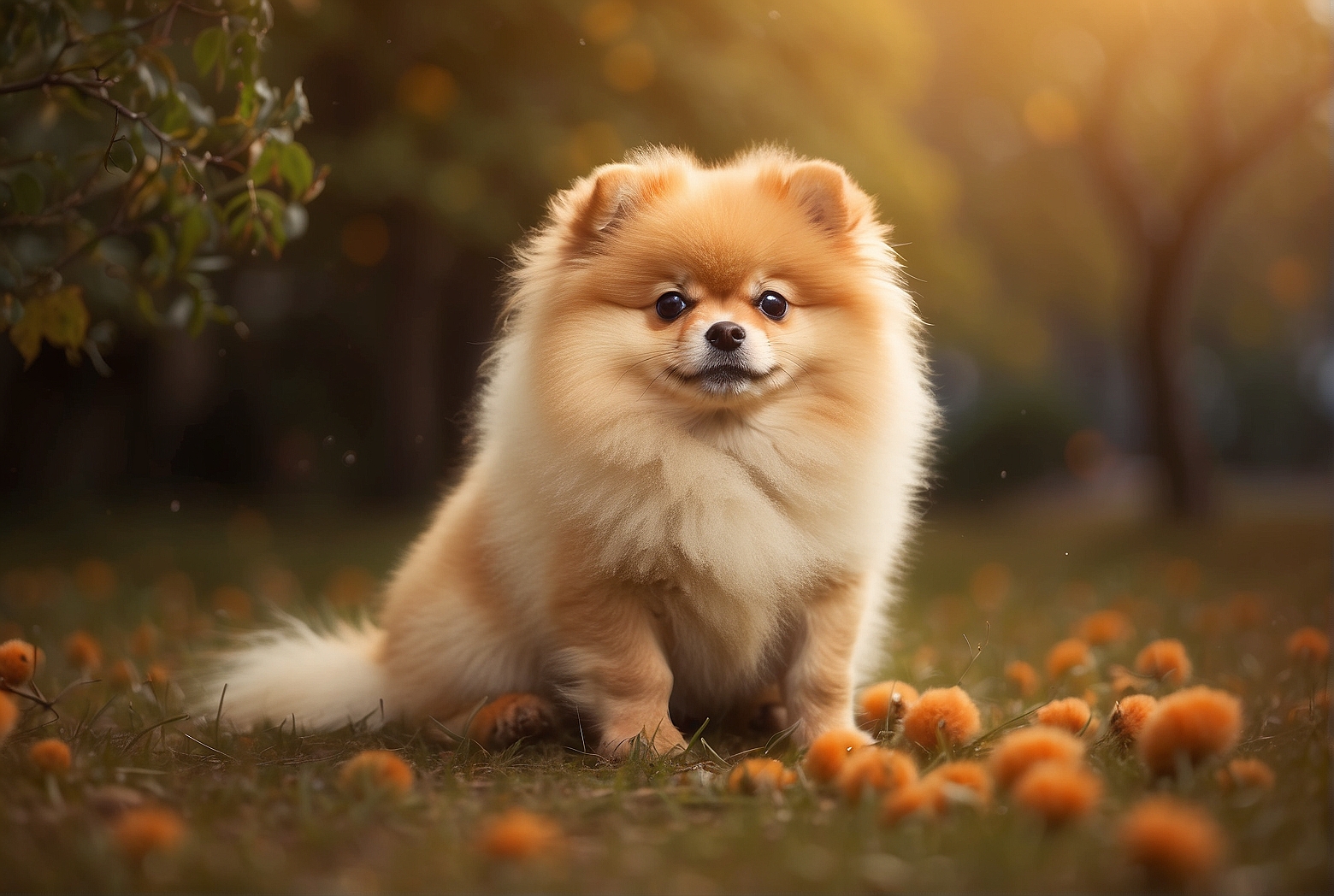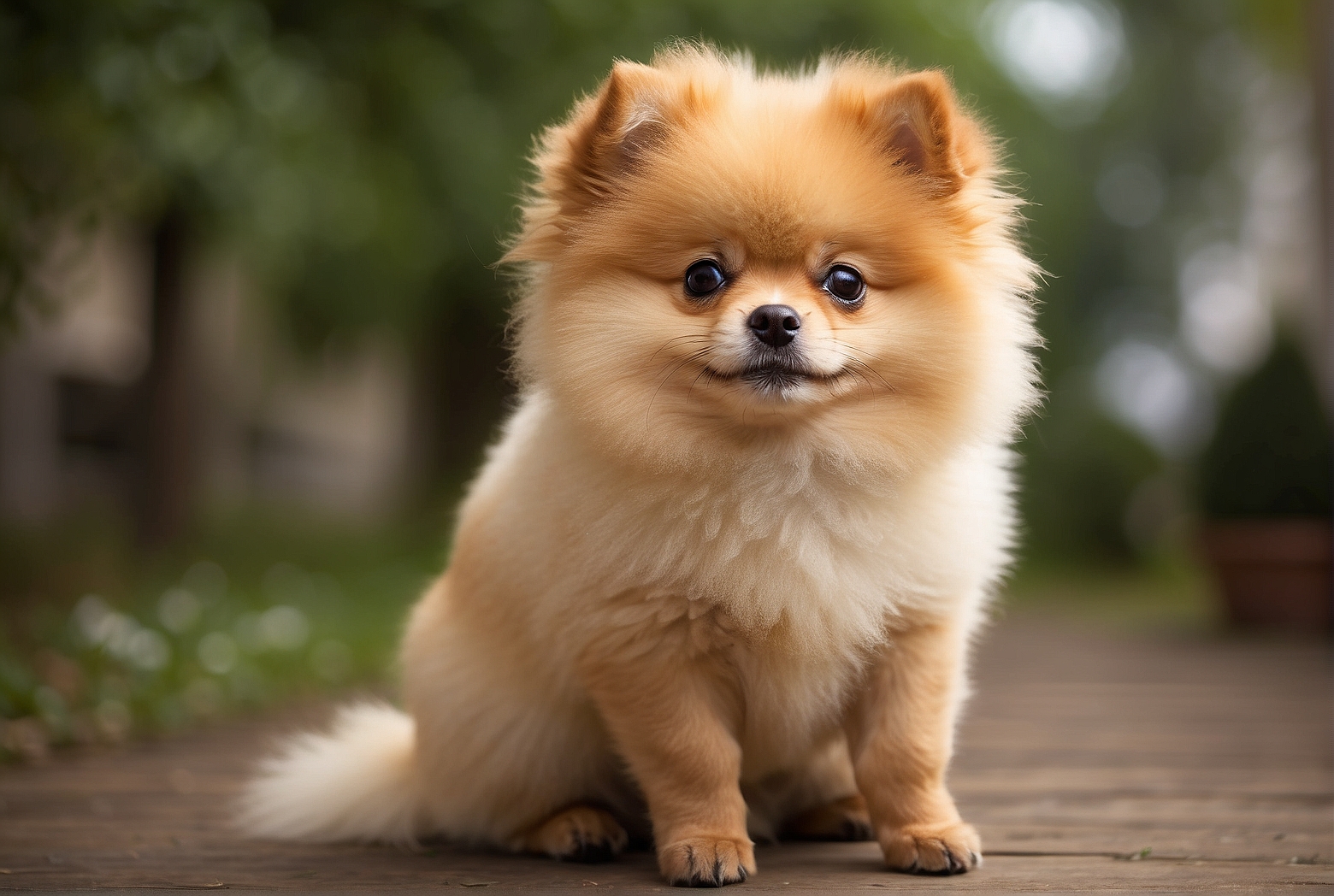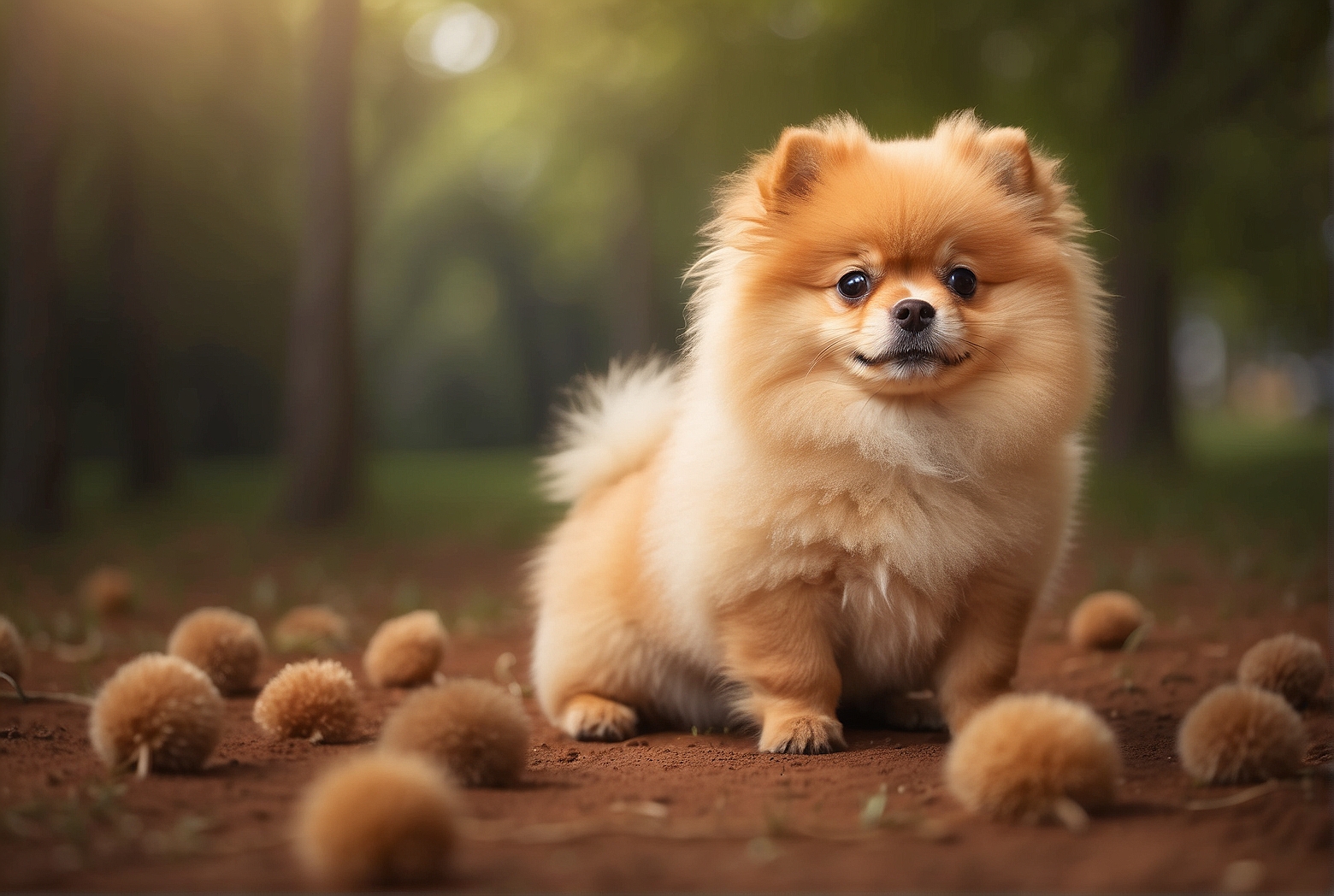So you’ve recently brought home a cute and fluffy Pomeranian puppy, and you can’t help but wonder, “At what age do Pomeranians stop growing?” Well, fret not, as we’ve got you covered! In this article, we’ll provide you with all the information you need to know about the growth of these adorable little furballs. From their puppyhood to adulthood, we’ll explore the stages at which Pomeranians stop growing and what factors might influence their growth. Whether you’re a new Pomeranian owner or simply curious about these pint-sized pooches, keep reading to discover the fascinating world of Pomeranian growth.
Factors influencing growth in Pomeranians
Pomeranians, like any other breed of dog, go through various stages of growth. Several factors contribute to their growth and development, including genetics, nutrition, health, and physical activity. Understanding these factors is crucial in providing the best care for your Pomeranian and ensuring their healthy growth.
Genetics
Genetics play a significant role in determining the growth pattern of Pomeranians. The genes inherited from their parents can influence their adult size, weight, and overall body structure. Some Pomeranians may be bred to be smaller or larger than others, leading to variations in their growth potential. It is important to consider the genetics of your Pomeranian when tracking their growth and monitoring their overall health.
Nutrition
Proper nutrition is essential for the healthy growth of Pomeranians. A well-balanced diet that meets their specific needs ensures they receive the necessary nutrients for optimal growth. Puppies, especially during their rapid growth phase, require a diet rich in proteins, fats, vitamins, and minerals. As Pomeranians transition from puppyhood to adulthood, their nutritional needs may change, and a balanced diet tailored to their age and activity level should be provided.
Health
Good health is crucial for the growth and development of Pomeranians. Regular veterinary check-ups, vaccinations, and preventive care help ensure they remain healthy throughout their growth stages. Conditions such as underlying health issues or inherited diseases can impact their growth rate or overall size. It is important to monitor your Pomeranian’s health and address any concerns promptly, as they can greatly influence their growth trajectory.
Physical activity
Physical activity is an integral part of a Pomeranian’s growth and development. Regular exercise supports healthy muscle and bone development, as well as overall cardiovascular health. Engaging in activities such as walks, playtime, and certain types of training helps create a strong and well-rounded Pomeranian. However, it is essential to balance physical activity with their age and individual limitations to prevent injury or strain on their developing bodies.

Growth stages in Pomeranians
Pomeranians go through distinct growth stages, each with its unique characteristics and requirements. Understanding these stages is crucial for providing appropriate care and ensuring the optimal growth and development of your Pomeranian.
Neonatal stage
The neonatal stage encompasses the period from birth to approximately three weeks of age. During this stage, Pomeranian puppies are highly dependent on their mother. Their primary focus is on rapid physical growth and the development of their senses. They rely on milk feeding from their mother, ensuring they receive the necessary nutrients for their growth.
Puppy stage
The puppy stage occurs between four weeks to six months of age. It is a critical phase characterized by the teething phase, increased physical activity, and the introduction of solid food. Pomeranian puppies start to explore their surroundings, interact with their littermates, and become more independent. Their energy levels increase, leading to a need for more physical exercise and mental stimulation.
Adolescent stage
The adolescent stage starts around six months of age and lasts until approximately one year. During this period, Pomeranians undergo significant changes in their body proportions as they transition into adulthood. Their skeletal growth is nearly complete, and they tend to have increased exercise requirements. Ensuring they receive adequate exercise, while also considering their growing bodies, is essential to promote healthy development.
Adult stage
The adult stage begins from one year and beyond in Pomeranians. By this stage, they have reached their full size and have completed most of their growth. It is crucial to provide them with a maintenance diet that suits their adult needs to maintain their overall health. Regular exercise and mental stimulation continue to be important during this stage to ensure they remain physically and mentally well-balanced.
Neonatal stage
The neonatal stage in Pomeranians covers the period from birth to approximately three weeks of age. During these weeks, significant developments take place that lay the foundation for their future growth and well-being.

Birth to 3 weeks
In the first few weeks of life, Pomeranian puppies are tiny and completely reliant on their mother for their nourishment and care. They primarily focus on rapid physical growth, with significant weight gain occurring during this period. Puppies’ eyes and ears remain closed, and they rely on their sense of touch and smell to navigate their environment.
Development of senses
As they progress through the neonatal stage, Pomeranian puppies slowly start to develop their senses. Their eyes begin to open around the second week, revealing their vibrant eye color, and their ears become more sensitive to sounds. This gradual development of senses allows them to become more aware of their surroundings and the world around them.
Milk feeding
During the neonatal stage, Pomeranian puppies rely solely on their mother’s milk for nutrition. The mother’s milk provides them with essential nutrients, antibodies, and maternal care necessary for their healthy growth. The frequency and duration of milk feeding gradually decrease as the puppies progress through this stage, leading to the introduction of solid food.
Physical growth
The neonatal stage is characterized by rapid physical growth in Pomeranians. With the abundance of nourishment and care from their mother, the puppies gain weight consistently during this period. Their bodies grow and develop, laying the foundation for the subsequent growth stages. Monitoring their weight gain and ensuring their overall health is crucial during this stage to identify any potential concerns or growth issues.
Puppy stage
The puppy stage in Pomeranians spans from four weeks to six months of age. It is an exciting period filled with significant changes and milestones as the puppies venture into the world.
4 weeks to 6 months
During the puppy stage, Pomeranian puppies undergo remarkable growth and development. Their bodies continue to grow and mature, and they become more active and curious about their surroundings. It is a phase marked by exploration, playfulness, and learning new behaviors.
Teething phase
As Pomeranian puppies grow, they go through a teething phase during the puppy stage. This period is marked by the eruption of their deciduous (baby) teeth and the subsequent replacement of these teeth with their permanent set. Teething can cause discomfort and itching, leading puppies to chew on objects to alleviate the irritation. Providing appropriate chew toys and dental hygiene aids can help manage this phase effectively.
Increased physical activity
Pomeranian puppies experience a surge in energy levels during the puppy stage. They become more active, engaging in playtime with their littermates and exploring their environment. Regular physical activity is essential to support their muscle and bone development. Short walks, interactive games, and supervised play sessions help satisfy their natural instincts while promoting healthy growth.
Introduction of solid food
As Pomeranian puppies progress through the puppy stage, the introduction of solid food becomes necessary to support their increasing energy demands. Starting with a gradual transition from their mother’s milk, a high-quality puppy food formulated for small breeds is typically recommended. This provides the essential nutrients, vitamins, and minerals required for their growth and development.
Adolescent stage
From around six months to one year of age, Pomeranians enter the adolescent stage. This period is marked by noticeable changes in their body proportions and increasing exercise requirements.
6 months to 1 year
During the adolescent stage, Pomeranians undergo significant changes in their body proportions. They start developing a more mature appearance, with their bodies becoming leaner and their facial features becoming more defined. Pomeranians may experience a growth spurt during this stage, further influencing their overall size and physique.
Changes in body proportions
As Pomeranians transition from puppyhood to adulthood, their body proportions begin to change. Their legs may lengthen, and their bodies become more streamlined. It is important to monitor their growth and ensure they receive appropriate nutrition and exercise to support healthy muscle and bone development during this period.
Completion of skeletal growth
By the time Pomeranians reach the adolescent stage, most of their skeletal growth is complete. While they may continue to develop muscle and body mass, their bones have achieved their full potential. Care should be taken to avoid excessive physical strain or intense exercise during this stage to prevent potential damage to their still-developing bodies.
Increased exercise requirements
As Pomeranians enter the adolescent stage, their exercise requirements increase. Regular physical activity, including walks, playtime, and mentally stimulating games, is necessary to promote their overall well-being. However, it is important to strike a balance, considering their age, individual limitations, and any potential health concerns to ensure their safety and well-being.
Adult stage
The adult stage in Pomeranians begins when they reach one year of age and extends throughout their adult years. It is a period of stability and maturity, but still requiring appropriate care to support their continued well-being.
1 year and beyond
By the time Pomeranians reach the adult stage, they have generally attained their full size and weight. They have completed most of their growth and have settled into their mature form. While their growth may have stabilized, their overall health and well-being remain a priority.
Reaching full size
Once Pomeranians reach the adult stage, they have typically reached their full size. Their height and weight have stabilized, reflecting their genetic potential and overall growth. However, it is important to note that there can be variations in size among individual Pomeranians, as genetics and other factors come into play.
Maintenance diet
During the adult stage, Pomeranians require a maintenance diet that caters to their specific nutritional needs. A well-balanced diet, tailored to their age, size, and activity level, is crucial for their continued health. Providing an appropriate mix of proteins, fats, carbohydrates, and micronutrients ensures they receive the necessary fuel to maintain their overall well-being.
Exercise and mental stimulation
Even in the adult stage, Pomeranians require regular exercise and mental stimulation to stay happy and healthy. Daily walks, engaging play sessions, and interactive toys help prevent boredom and promote a strong bond between you and your furry companion. Remember to respect any limitations they may have due to age or underlying health conditions and adjust their exercise routines accordingly.
Average size of adult Pomeranians
Pomeranians are generally known for their small and compact size. Their adult size can vary, influenced by several factors such as genetics, breeding, and individual variations.
Height
On average, Pomeranians stand between 6 to 7 inches tall at the shoulder. This measurement is taken from the ground to the highest point of their shoulders and serves as a general guideline for their height. However, it is important to note that individual Pomeranians may fall outside this average range due to the influence of genetics and other factors.
Weight
Adult Pomeranians typically weigh between 3 to 7 pounds. Again, this is an average range, and some Pomeranians may weigh slightly more or less. Factors such as gender, genetics, and overall health can contribute to variations in weight among individual dogs.
Variations in size
It is worth mentioning that while Pomeranians generally fall within a certain size range, there can be individual variations. Some may be on the smaller end of the spectrum, known as teacup Pomeranians, while others may be slightly larger. These variations are influenced by genetics and breeding practices and should be considered when tracking your Pomeranian’s growth and monitoring their overall health.
Factors affecting growth rate
Several factors can influence the growth rate of Pomeranians. Understanding these factors can help ensure the healthy development of your furry friend.
Gender
Gender plays a role in the growth rate and ultimate size of Pomeranians. Male Pomeranians tend to be slightly larger and heavier than females, although individual variations can still occur. It is essential to consider their gender as you monitor their growth and compare it to typical growth patterns.
Health conditions
Underlying health conditions can affect the growth rate and overall size of Pomeranians. Certain medical issues may limit their ability to grow and develop at a normal pace. Regular veterinary check-ups and prompt attention to any health concerns are crucial to ensure any potential issues are addressed and managed effectively.
Nutrition
Proper nutrition is vital for the healthy growth of Pomeranians. An inadequate diet or an imbalance of essential nutrients can hinder their growth and overall development. Providing a high-quality, balanced diet and following appropriate feeding guidelines ensures they receive the necessary nutrients for optimal growth.
Physical activity
Both insufficient and excessive physical activity can impact a Pomeranian’s growth rate. Insufficient exercise may lead to weight gain and stunted growth, while excessive exercise can strain their growing bodies. Striking a balance and providing appropriate exercise based on their age, size, and individual needs is crucial for their healthy growth and development.
Signs of growth completion
Recognizing when a Pomeranian’s growth is complete is important to ensure proper care and maintenance.
Stabilization of size
One of the primary signs that a Pomeranian has completed their growth is the stabilization of their size. Once their height and weight have remained relatively consistent for an extended period, it indicates that their growth plates have closed, and their growth has reached its full potential.
Cessation of height and weight gain
After a certain point in their growth journey, Pomeranians will stop gaining height and weight. Once their body proportions have settled, little to no further growth in these aspects should be observed.
Behavioral changes
Pomeranians may exhibit certain behavioral changes as they complete their growth. They might become more settled, less hyperactive, and display a calmer overall demeanor. However, each dog is unique, and some individual variations may occur.
Decline in growth rate
As their growth nears completion, Pomeranians generally experience a decline in the rate at which they gain height and weight. This gradual decrease in growth rate is another indicator that they have reached their full growth potential.
Conclusion
Monitoring the growth and development of your Pomeranian is a crucial part of responsible pet ownership. Understanding the factors that influence their growth, the various growth stages they go through, and the signs of growth completion helps ensure their overall well-being. Regular veterinary consultations and appropriate care, tailored to their specific needs, promote a healthy and happy Pomeranian throughout their life. By providing the right nutrition, exercise, and attention, you can help your Pomeranian thrive and enjoy a full and fulfilling life by your side.
